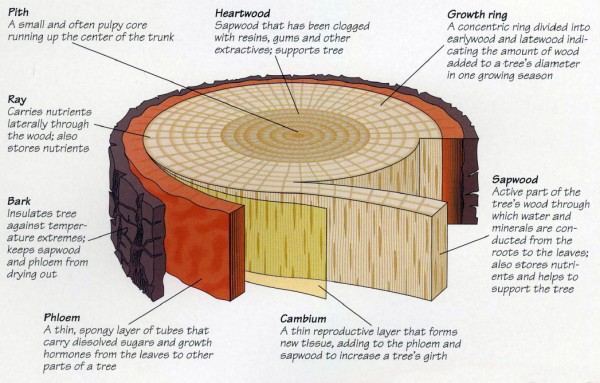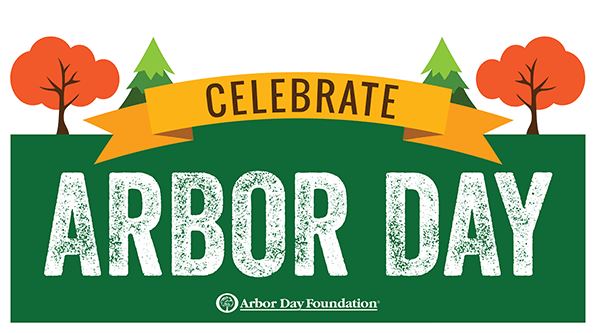7 places to see fall colors in Springfield and the Ozarks
http://www.news-leader.com/story/entertainment/2017/09/27/7-places-see-fall-colors-springfield-and-ozarks/701450001/

(Photo: News-Leader file photo)
Gregory J. Holman and Wes Johnson, News-Leader Published 6:00 a.m. CT Sept. 27, 2017
It’s leaf-peeping season in the Ozarks. As summer temperatures slide into fall’s chilly breezes, leaves transform from bright green to a range of fall colors: golds, reds, oranges and purples. And some brown. Why brown? Drought is a part of this year’s fall-foliage season. The National Weather Service announced Sept. 14 that much of the Ozarks and the eastern half of the state is undergoing light drought conditions. Drought is already making yellow and brown leaves appear on trees in the Show-Me State right now, a forestry specialist told the Columbia Missourian Tuesday. “The reason we are seeing some yellows now is due to the lack of rainfall these past few weeks,” Hank Stelzer, a forestry extension specialist at Mizzou’s College of Agriculture, told the paper. Typically, mid-October is peak fall color season in Missouri, though predicting exactly when those autumn hues will come to life is “difficult,” according to a Missouri Department of Conservation website. Search “fall color” at nature.mdc.mo.gov for more details, along with a weekly updated guide to how the leaves are doing in each of Missouri’s regions. The latest on southwest Missouri is that leaves are “beginning to turn.”
Despite the drought, the classic reds, oranges and purples are on their way, Missouri Department of Conservation officials said in a separate news release. To appear, those colors just need cool — not freezing — autumn nights. Cool air helps trap natural sugars inside the leaves, forming “building blocks” for the full range of fall colors. Meanwhile, cool air breaks down the leaves’ green pigments. Where to find showy, beautiful trees this year? It’s not hard, but here are 7 tips on where to experience fall in all its glory in Springfield and the Ozarks.
- Urban leaves: Maple Park Cemetery
Topping the list and so easy to see is Maple Park Cemetery in the heart of Springfield, on Grand Street between Campbell and Jefferson avenues. The cemetery is filled with maple trees, which arguably produce the most vivid colors of any tree in the Ozarks. Maple leaves always contain bright red pigments once the green chlorophyll fades away.
Fun fact: Maple Park Cemetery is accessible by a City Utilities bus. Take the red line.
Fall color at the Springfield Conservation Nature CenterBuy Photo
Fall color at the Springfield Conservation Nature Center Tuesday, October 27, 2009. (Photo: News-Leader file photo)
- Riverside leaves: the James River
Hiking trails and paddling trips on the James River offer great ways to get outdoors and experience the fall colors.
Walking trails at the Springfield Conservation Nature Center take wanderers down to the river’s edge. Sycamores, oaks and ash trees will soon turn from green to yellow, orange and gold.
Splash your canoe or kayak at Lake Springfield and follow the James River Water Trail five miles upstream to enjoy trees changing color along the shoreline.
In fact, MDC recommends routes along any river with views of forested bluffs and on float trips under a colorful forest canopy.
The cold, blue waters of Ha Ha Tonka Spring emerge
The cold, blue waters of Ha Ha Tonka Spring emerge from a towering rock bluff. (Photo: File photo)
- Laughing water leaves: Ha Ha Tonka State Park
Another beautiful fall hike among the trees, the trails at the 3,751-acre Ha Ha Tonka State Park, an hour and 20 minutes northeast of Springfield, are a great place to see the changing trees and towering karst cliffs up close.
The park and its historic stone castle ruins was voted fourth best state park in the nation by readers of USA TODAY. Not to be missed: The deep blue Ha Ha Tonka spring that pours 58 million gallons of water a day into a forest stream from the base of a massive vertical stone wall.
A small waterfall trickles into a crystal clear poolBuy Photo
A small waterfall trickles into a crystal clear pool at Cedar Gap Conservation Area. (Photo: Wes Johnson/News-Leader)
- Hiking leaves: Cedar Gap Conservation Area
If you’re up for a vigorous walk, Cedar Gap Conservation Area in Wright County is just 30 minutes east of Springfield, south of U.S. 60 highway.
The moderately strenuous hiking trail takes visitors downhill through oaks, pines and dogwood trees to a gurgling clear creek that forms the headwaters of Bryant Creek. The first half is all downhill and takes hikers to a small log cabin that once was a fishing and hunting getaway for the previous landowner.
Visitors are surrounded by tall, steep hills, and one of them is the second-highest prominence in Missouri. Be ready for a workout going back uphill, and wear sturdy boots.
An abundance of tree species will be changing color
- Kid-friendly leaves: Nathanael Greene/Close Memorial Park
For a much less grueling (and more kid-friendly) fall outing, take a stroll at Nathanael Greene/Close Memorial Park on Springfield’s west side. The walkways are paved! The tops of the park’s trees will soon begin changing color, especially around Lake Drummond.
The geese will want a snack, but visitors are encouraged not to feed them. And for a huge variety of color, walk a short distance to the Springfield-Greene County Botanical Center and the Mizumoto Japanese Stroll Garden, which features hundreds of species of trees and plants. All areas are free.
Henning Conservation Area offers more than five milesBuy Photo
Henning Conservation Area offers more than five miles of scenic hiking trails on the northwest edge of Branson. (Photo: Wes Johnson/News-Leader)
- Taney County leaves: Branson tours
The Branson/Lakes Area Convention and Visitors Bureau suggests four fall color routes you can drive. They’ll take one hour up to four hours, and leaf-peepers can see Table Rock Lake, Kimberling City, downtown Branson, Forsyth, Rockaway Beach, Bull Shoals Lake, Peel Ferry and Mark Twain National Forest, depending on the route you choose. Oh, and there’s a tour for walkers and joggers through Branson Landing and downtown. Find all the details, including handy maps, at explorebranson.com/fall/driving-tours.
Meanwhile, don’t forget the Henning Conservation Area, located on Highway 76 near Shepherd of the Hills Expressway. It contains five miles of scenic trails.
Leaves of a sweet gum tree glow red and orange Friday,
Leaves of a sweet gum tree glow red and orange Friday, Nov. 4, 2005, at Pinnacle State Park near Little Rock, Ark. (Photo: DANNY JOHNSTON, ASSOCIATED PRESS)
- Arkansas leaves: Tour the Natural State
If you really want to road-trip it, head south of the state line. Arkansas Parks and Tourism has a guide to scenic drives throughout the state and beyond. Explore the Boston Mountains Scenic Loop — from Fayetteville to Alma, it’s studded with state parks, historic sites and trails. Or consider the Scenic 7 Byway, from Harrison to Jessieville. Visit arkansas.com and search “fall foliage.” Like MDC, Arkansas Parks & Tourism offers a leaf guide that’s updated weekly.
How our weather pattern in mid-Missouri could affect fall foliage
http://www.abc17news.com/weather/how-our-weather-pattern-in-mid-missouri-could-affect-the-fall-foliage/627654605
Brigit Mahoney KQFX (MO), Sep 28, 2017 04:41 PM CDT
Heading into fall, many look forward to the changing weather pattern, as well as the changing landscape. Beautiful, vibrant colors are an annual event as the leaves begin to change. However, many factors determine the look of fall foliage. Weather is one factor. In mid-Missouri, fall foliage typically is at its peak towards late October. The weather pattern we see leading up to this point can have a huge impact on how vibrant the colors are. Also, the weather pattern we see during the early fall season can impact foliage as well.
After spring, once the leaves are fully developed, trees start to store nutrients that helps the green leaves transition into fall colors. This is why sufficient rainfall during the summer months is crucial for optimal fall foliage.
This summer in mid-Missouri, we saw below average rainfall. For the months of June, July, and August, average rainfall in Columbia accumulates to 13.23″. Summer 2017 only brought in 11.21″, which is a little over 2″ below average. This isn’t a drastic drop in precipitation, but could be accounted for when considering fall foliage.
As we look closer to fall, the month of September has been dry as well. Average rainfall in Columbia for September sits at 3.92″, but this month has only brought in 1.92″ of rain. That’s a deficit of 1.57″. When considering all four months leading up to October, we fall nearly 4″ short of average. This could impact the typical orange, red, and purple colors we see during peak fall foliage, instead giving us duller brown and orange tones.
During the early fall, the weather continues to impact the foliage. Cool nights and sunny days help bring out the pigments in the leaves. For the next few days, mid-Missouri will have cool nights as lows drop into the 40s and 50s with sunny days. However, this pattern won’t last long.
The Climate Prediction Center’s Temperature Outlook indicates a warm up that’s in store for all of mid-Mo. It also predicts above average tempurates from October 3-9. By Monday, temperatures will be back into the mid 80s during the day, with lows only bottoming out in the 60s. This could have a negative impact on our fall foliage.
One last thing to note during the early fall season is rainfall. Surprisingly, it is better to have dry conditions as we head into the month October. This ensures that the leaves won’t fall prematurely before the colors develop. There is some good news here! The Climate Prediction Center’s Precipitation Outlook keeps most of mid-Missouri in below average rainfall from October 3-9. This could help those beautiful fall colors we all wish to see!
During peak foliage, it’s important that we see light winds and no frost to ensure a longer period with the beautiful, vibrant landscape!
Keep an eye out for the changing landscape here in mid-Missouri as we head towards late October. Send any photos to the ABC 17 Stormtrack Weather Team.








